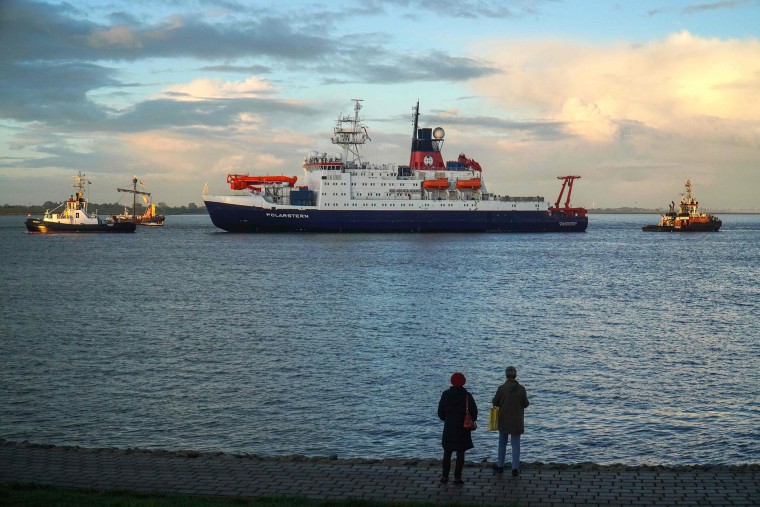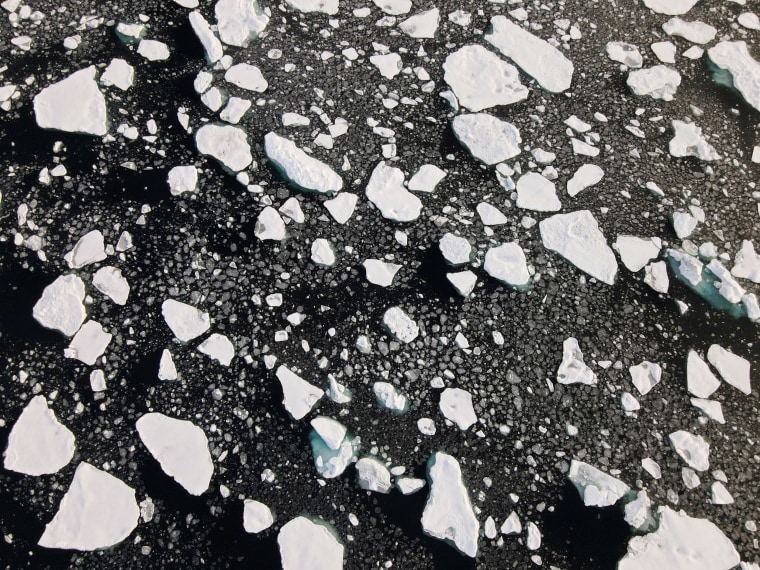The icy landscape of the Arctic as we imagine it will no longer exist in just a few decades, researchers returning from a major expedition to the frozen north have warned.
"This world is threatened. We really saw how the ice is disappearing," said Markus Rex, leader of the largest-ever Arctic expedition, at a press conference Monday.
Researchers involved in the expedition called MOSAiC — Multidisciplinary drifting Observatory for the Study of Arctic Climate — returned on the German vessel, the Polarstern, which spent more than a year at sea.
For much of the mission, the Polarstern was carried by the natural ice drift, pushed on by the wind, while researchers from 20 countries collected data about the environment and climate change. No other expedition to date has been able to collect similar evidence from the center of the Arctic, with the vessel spending weeks within 125 miles of the North Pole.
Rex, an atmospheric scientist with the Alfred Wegener Institute Helmholtz Centre for Polar and Marine Research in Bremerhaven, Germany, said researchers pushed boundaries and battled the extreme landscape to gather data that "will change climate research forever."

There were many safety precautions taken as researchers set up their instruments in the ever-changing landscape, which saw the ice form mountain, flatten out again and even form deep cracks, Rex said.
"We constantly have to relocate things so that we don't lose anything," he said.
Preparing to go out to take measurements was a lengthy process on its own, Ola Persson, an atmospheric scientist with National Oceanic and Atmospheric Administration, told NBC News while aboard the Polarstern last week.
Researchers had to put on layers of warm clothes to survive the frigid temperatures, he said. The other concern was their furry neighbors: polar bears.
At least six people were on polar bear watch every day as researchers set out to measure atmospheric, ocean and other climate data on the moving sea ice.
"The bears did have a few encounters with our instruments. They're primarily very curious animals," Persson said, adding that there were luckily no direct encounters with the researchers.
Download the NBC News app for breaking news and politics
While years of analysis of the data lay ahead, Rex said researchers are already alarmed by the evidence they've gathered.
"The ice is dying," Rex said. "If we keep going as we are then the Arctic will be ice-free in summer within a few decades and the world I just described will no longer exist."
Temperatures measured by the researchers through the winter were consistently 18 degrees higher than those recorded by the Arctic explorer Fridtjof Nansen 125 years ago, he said.
Earlier this year, the World Meteorological Organization reported the highest ever temperatures recorded north of the Arctic Circle with the Russian town of Verkhoyansk reaching 100.4 degrees.
North of Greenland, Rex said researchers witnessed wide areas of open water that should have been covered in thick ice. Even at the North Pole, the ice was melting and had holes, sending a clear message of the consequences of climate change.
"It was very evident, you could see it all around," he said.
Reuters contributed to this report.

